History of the Country Women's Association (CWA) in Australia
The troubled early years of the 20th Century inspired an explosion in the demand for women’s rights world-wide. Following Canada’s lead in enabling the empowerment of rural women, the Country Women’s Association (CWA) was initiated in Australia in 1922, with New South Wales and Queensland – followed by Western Australia (1924), Victoria (1928), South Australia (1929), Northern Territory (1933), and Tasmania (1936).
The Associated Country Women of the World (ACWW) was formed in 1933, and encompasses CWA in Australia. (ACWW gives voice over 9 million rural and non-rural women in more than 80 countries).
The formation of a national body was agreed in 1945 by all CWA State Presidents. The First Annual Conference of the Country Women’s Association of Australia was held in Adelaide in 1946, with Australian delegates being sent to the ACWW Conference in Amsterdam the following year.
These women were quick to realise strength lay in unity, and CWA quickly became a large, resourceful, influential women’s organisation. The members worked tirelessly to set up baby health care centres, fund bush nurses, build and staff maternity wards, hospitals, schools, rest homes, seaside holiday cottages – and much more. Women of all ages were involved, with the younger ladies forming a strong “Younger Sets” movement, which lasted for many years. For further information click: “History of the Younger Sets” from our archives.

Younger Sets Easter leadership camp, 1949: South Beach Fremantle
Throughout the 1930’s depression years, CWA branches statewide helped those in need with food and clothing. During World War II, members provided meals for the troops, made camouflage nets, sheepskin vests, and knitted balaclavas and socks for the troops. CWA were rated one of the best voluntary war-time services in Australia. In 1992, the CWAA was awarded the RSL Anzac Peace Prize, in recognition of their outstanding effort in promoting international understanding, and contributing to world peace in accordance with the best traditions of the ANZAC spirit. Members continue to support our forces overseas today.
At the same time, CWA members have continued to run homes and properties where they were often mother, nurse, teacher, cook, and general hand. The women of the CWA, while believing deeply that their role in the family is vitally important, have always been initiators, fighters and lobbyists. They have made localities into communities, by providing social activities and educational, recreational and medical facilities.
After nearly a century, the CWA remains the largest, most influential women’s organisation in Australia today. CWA aims to improve life for women and their families, especially those who live in rural and remote Australia. Initially, only women whose income was derived from the land could become members. This has been changed, so that today women can join CWA, and enjoy CWA support, regardless of their location, employment, or income. The organisation remains self-funded, non-party-political and non-sectarian, and is run largely by its volunteers – the CWA Members.
History of the Country Women's Association of Western Australia
1924 First West Australian Branch
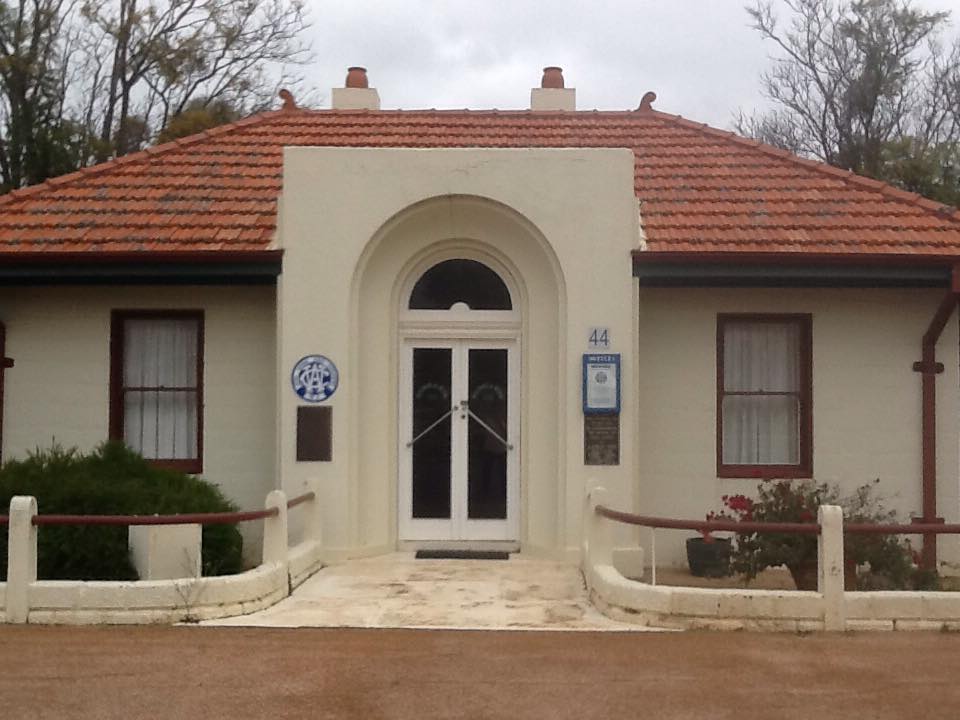
The first West Australian regional branch of the Country Women’s Association (CWA) of WA was set up in Nungarin, and it is still operating today. 2014 saw our 90th birthday celebrations held there.
The aim of the Association was then, and still remains, to improve the well-being of all people, especially those in country areas, by promoting courtesy, cooperation, community effort, ethical standards, and the wise use of resources.
CWA was formed to meet the needs of the time – to help women in isolated rural communities, and to provide a voice to Government to seek solutions to the difficulties facing families, particularly those in such areas. From the formation of the Association in 1924, there have been various arrangements to accommodate our Head Office in Perth. The history of these Perth bases has now been compiled from our archives, and can be found in: A STORY OF THE HOMES OF THE COUNTRYWOMEN of WA
Since it began in 1927, CWA of WA has been a strong advocate for educational issues throughout the state. See CWA of WA – action for educational issues in WA for some which have been addressed over the years.
1925 First CWA Rest Room
“Our buildings to us are not just bricks and mortar, they are the tools which assist us in our work for the community.”
(Mrs P.M. Smeeton CWA of WA State President 1977)
“A variety of places were used for branch meetings; bough sheds, a spare room in a cheese factory, a former timber magnate’s mansion, a teacher’s office, tiny sheds at railway sidings, the verandah of a general store where members perched on bags of potatoes, tractor tyres and piles of plough discs, were some of the meeting places. The establishment of a Rest Room became the main objective of most branches, not only for a meeting room but to give much needed facilities to farming families. For most country folk, the trip by horse and cart or open truck into the nearest town was a major event. This often meant setting off early in the morning because what is now a trifling distance, those days took hours. Before the day was half over many a mother sighed for a place where she could feed a baby or sit in sheltered comfort while waiting for her husband. What a comfort to have been able to make a cup of tea! Almost as soon as a branch was formed, members began planning and working for a Rest Room. Realising their value, Governments [were] generous in granting land in country towns for this purpose.
Donnybrook Branch, formed in 1925, was the first branch to own a Rest Room transforming an empty shop opposite the railway station in 1928 into a real home for the branch. Though Baandee Branch had only seven members, they made the building of a Rest Room their first objective. On 24 October 1928, the first Rest Room to be built by CWA in Western Australia opened for meetings.” (Excerpt taken from Her Name is Woman compiled by R. Erickson, B. Gibbings, L. Higgins)
Rest Rooms to CWA Centres
A conference decision in 1977 altered the terminology of branch buildings from Rest Rooms to CWA Centres to reflect the changing needs and expectations of the communities. Today, buildings vary considerably with some built on freehold land, some on Crown Grants and others on railway leases. They also vary in size and construction from cosy weatherboard buildings to comfortable brick buildings and are all loved and used for the benefit of the local community. Although the priority of the early branches was to establish a Rest Room, today not every branch has a CWA Centre. They meet in various places such as Shire halls, community centres, libraries, church halls, private homes, schools and sporting facilities. Renting a room provides relief from the monetary expense of constant repairs for ageing centres.
1928 the first purpose built Rest Room
was built at
Baandee, then an important small town in the Wheatbelt region of Western Australia, between the towns of Kellerberrin and Merredin, on the Great Eastern Highway – approximately 230 kilometres from the state capital, Perth. In 1953 the Baandee branch was flooded out of its home for several months, the piano sitting up on 44 gallon oil drums. Consequently, the first West Australian CWA restrooms have been relocated from Baandee to the site of the first West Australian CWA Branch, at Mangowine, in Nungarin.
1930’s – Regional CWA Houses
When women from out of town were due to have their babies, the nearest regional centre would have a CWA House which was their accommodation so they could access medical help.
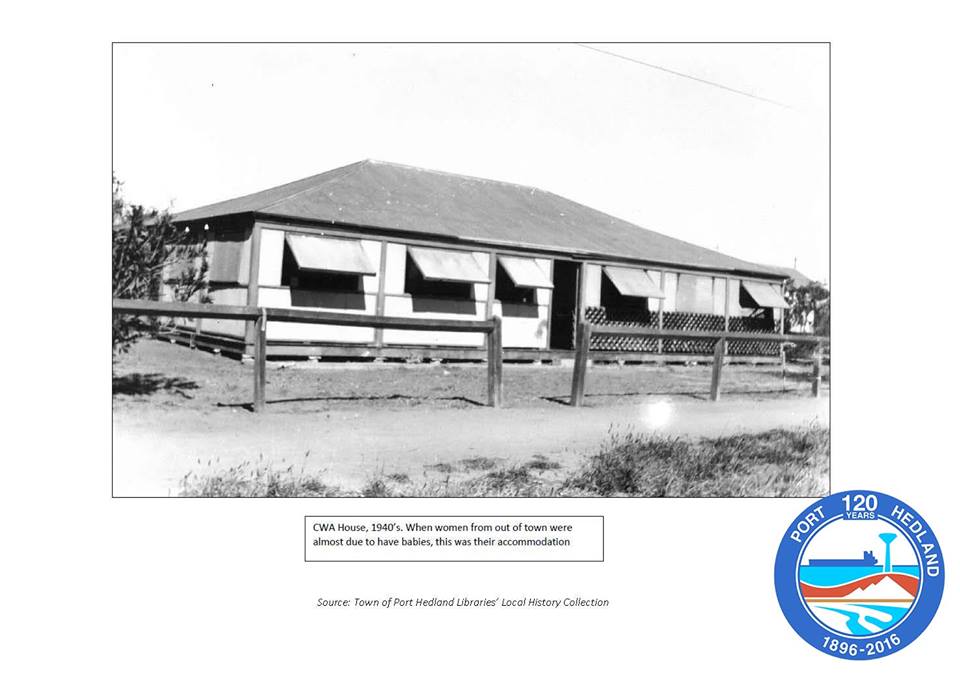
1929 First CWA Holiday Home
The First CWA Holiday Home established was ‘Sunshine’ at Cottesloe. This photo was found in an old CWA cookery book (6th edition, 1942).
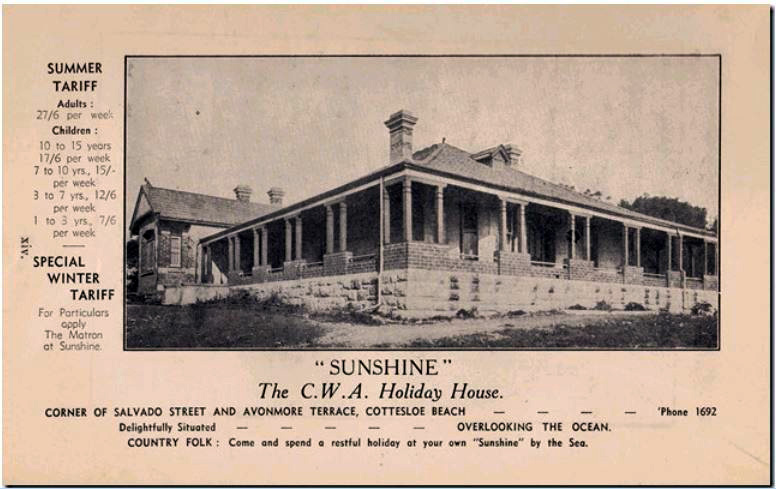
Cottesloe was followed by holiday homes in the Pilbara, Albany, Busselton and Dongara in the 1930s and South Fremantle, Esperance and Geraldton in the 1940s.
Current holiday homes at Busselton and Esperance were built more recently.
1934 CWA Magazine
The
Countrywoman of Western Australia was established as the official journal of CWA.
1936 CWA Cookery Book and Household Hints, Lady Mitchell Emergency Housekeeper Scheme
CWA Cookery Book and Household Hints was first published – a collection of recipes and household hints contributed by members who had “made do” during the Depression. This remains a best seller today having been updated from time to time.
The Lady Mitchell Emergency Housekeeper Scheme assisted country families by supplying a housekeeper during times of sickness or emergency. However, the LMEHKS closed when it became impossible to find housekeepers who were able to go to the country to work.
1938 Northam Residential College
The origin of the present-day college goes back to 1938, when the CWA opened a hostel in Northam to allow 12 girls, daughters of local CWA members, to attend Northam Senior High School.
1939 CWA Hostels for Country Students
Northam was the first of six CWA Hostels, where country students could board to attend the high school. In 1969 these were relinquished when the Government took on the responsibility of accommodating students at country high schools.
The War Years, 1939 – 45
Members worked tirelessly for the war effort through the CWA War Relief Fund.
Land Army Girls were trained and placed on farms.
1962 Pioneer Women’s Memorial
CWA began planning for the Pioneer Women’s Memorial in Kings Park.
1966 First CWA Retirement Unit
Cockburn Lodge built, first CWA retirement unit at Rockingham, quickly followed by others at Albany in 1968, and Geraldton.
1968 CWA House
This year became known as ‘The Year of the House’. CWA House was opened on the 28th July and later in the year the CWA Shop at the rear of the building opened. Members’ work is now sold through the CWA Showroom in the ‘new’ CWA House at 1176 Hay Street, West Perth.
The 1960’s saw the beginning of CWA of WA Leadership and Nutrition Schools for Aboriginal girls.
CWA Archives have put together this interesting history of an influential, long-running project – though the teaching aids used may look a little dated to modern eyes!
1974 CWA of WA Golden Jubilee
1974 was CWAofWA’s 50th year, and was celebrated accordingly. Statewide fundraising this year reached over $100,000, and members voted through State Conference that this was to be set aside in a special fund – the Jubilee Fund – to be used for the maintenance of Branch buildings.
This fund is still in operation for this purpose today, and helping branches in need.
1974 ACWW World Conference
14th Triennial Conference of the Associated Country Women of the World hosted in Perth by CWA of WA.
1977 CWA Australia Day
First CWA Australia Day Thanksgiving Service held at the Pioneer Women’s Memorial in Kings Park.
1978 CWA Mobile Resource Vehicle
First CWA Mobile Education Resource Vehicle, which was soon followed by 2 more. These were donated to the Education Department of WA for the benefit of children in regional and remote areas.
1980 Award for Community Service
Golden Swan Award presented to CWA. For 55 years of caring and concern for the community.
1983 CWA and Social Issues, CWA of Australia
Formation of the CWA Social Issues Fact Finding Team (SIFFT).
National Conference of CWA of Australia hosted in CWA House.
1985 CWA at the Perth Royal Show
CWA given the use of the Wesfarmers Perth Royal Show Headquarters for Royal Show hospitality, which continues to this day.
1986 CWA Training Programme
CWA Training Programme established.
1988 CWA Rural Information Service
CWA Rural Information Service established as a result of the rural crisis of the 1980s.
1990 Wool Promotion
CWA Wool Day promotions along with other West Australian produce.
1992 CWA of WA Bursaries, CWA of Australia ANZAC Prize
CWA of WA Bursaries for secondary students began.
CWA of Australia was awarded the RSL ANZAC Peace Prize in recognition of their outstanding effort in promoting international understanding and contributing to world peace in accordance with best traditions exemplified by the ANZAC spirit.
1996 Administration Changes, CWA Youth Leadership, CWA Supports Rural Surgical Service
New Constitution and major redistribution of Division boundaries was undertaken.
Beginning of CWA Youth Leadership courses.
Statewide Fundraising activities enabled the purchase of an essential item of equipment for the UWA Rural Surgical Service. The services of this team alleviated many a desperate situation in regard to Rural Health Services.
2001 CWA of WA goes it alone
CWA of WA withdrew from the National body CWA.
2010 Drought Action
2010 saw the second driest winter on record for WA. To help with our ongoing relief funding for our farmers, CWA combined with Woolworths, holding a state-wide Drought Action Day on Friday, December 3:
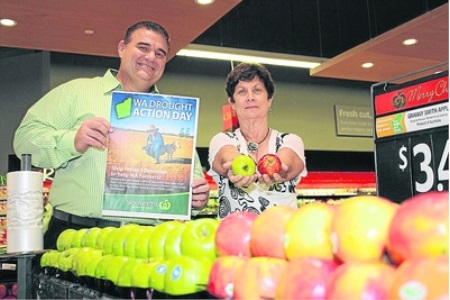
Maggie Donaldson at Woolworths Drought Appeal
2015 – 2016, Summer
CWA has always been there to support the community in times of crisis, and members were tested this summer.
2015 Fires
15th to 26th November huge bushfires in the eastern Esperance area saw CWA members turn out in support of locals, providing comfort and hundreds of meals.
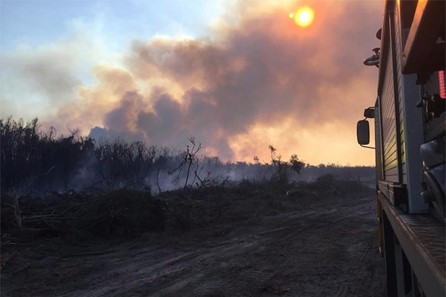
November 2015, Esperance fires
2016 Fires
Devastating bushfires swept through the South-west in January, destroying Yarloop CWA Hall. Local Members again worked round the clock to support firefighters and victims.
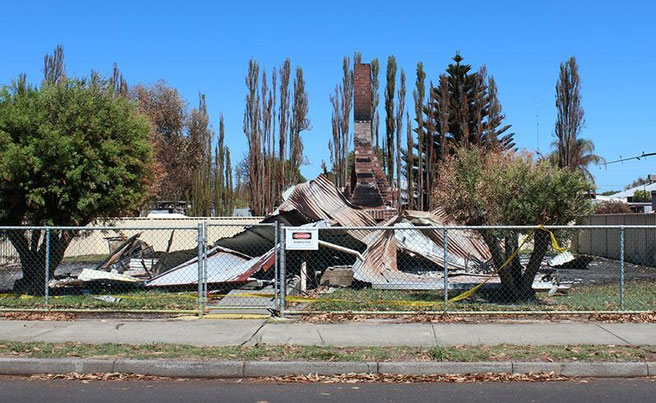
January 2016: Yarloop CWA building, Station Street, built 1954